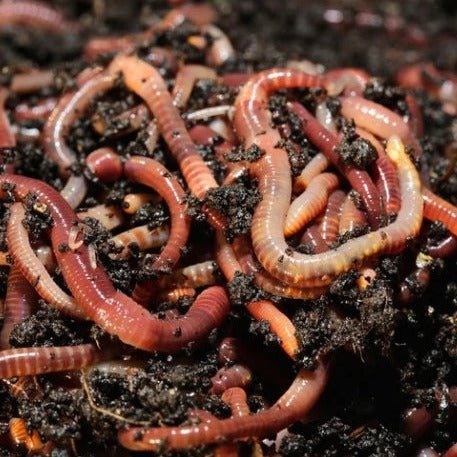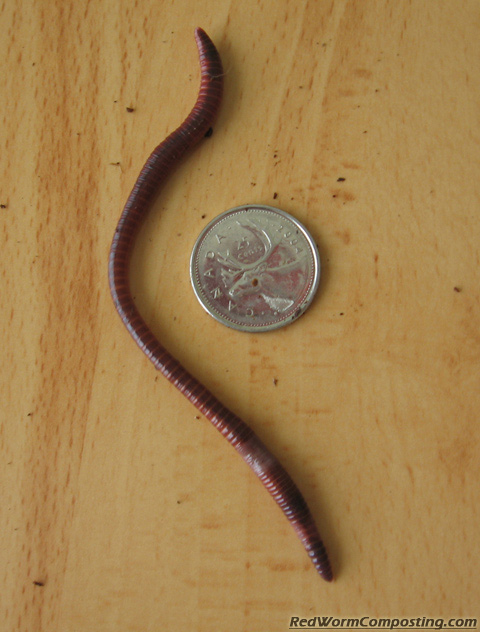The Amazing Globe of Red Wigglers: Boost Your Dirt Fertility Today
The duty of red wigglers, or Eisenia fetida, in improving soil fertility is a topic of expanding passion amongst gardeners and agricultural experts. These little yet efficient microorganisms change organic waste into useful worm castings, considerably enhancing dirt wellness and advertising lasting methods. As we check out the benefits of vermicomposting and the functional steps to create an effective worm bin, the potential impact of these worms on your gardening success comes to be progressively evident. Understanding the subtleties of their care and application may simply change the means you come close to dirt management. What insights can be gotten from integrating these impressive animals right into your horticulture routine?
Recognizing Red Wigglers
Red wigglers, medically understood as Eisenia fetida, are a varieties of earthworm that play an important function in improving dirt fertility. These worms flourish in organic-rich settings, such as compost heap and decaying plant material, where they eat natural waste and secrete nutrient-dense spreadings. Their one-of-a-kind anatomy, including a segmented body and a clitellum, enables them to replicate quickly and successfully procedure large amounts of raw material.

The eco-friendly relevance of red wigglers expands past plain waste handling; they contribute to the soil food internet, fostering a varied area of microorganisms that even more enhance dirt health. Comprehending the biology and behavior of red wigglers is necessary for using their complete potential in sustainable farming and horticulture techniques.
Benefits of Vermicomposting
(Red Wiggler Express)Harnessing the power of red wigglers via vermicomposting offers countless advantages that substantially improve dirt health and wellness and fertility. One of the primary advantages is the production of nutrient-rich worm castings, which are an excellent all-natural fertilizer. Red Wiggler Express. These castings include important nutrients like nitrogen, phosphorus, and potassium, advertising robust plant development and boosting plant yields
The visibility of worm spreadings enhances dirt appearance, enabling for much better water retention and drain. Red wigglers help break down natural issue, speeding up decomposition and reusing nutrients back right into the soil.
Vermicomposting likewise cultivates microbial activity, which is crucial for a healthy and balanced dirt community. Beneficial microorganisms flourish in the existence of worm castings, aiding in the breakdown of organic materials and boosting nutrition schedule to plants.
Finally, vermicomposting offers as an efficient waste management solution, lowering landfill waste by recycling kitchen area scraps and various other natural materials. This not just contributes to environmental sustainability however additionally advertises a circular economic situation within gardening and agriculture.
Exactly How to Set Up a Worm Bin
Establishing a worm container is a straightforward process that can dramatically improve your composting efforts. Begin by picking an appropriate container, which can range from a readily available worm bin to a straightforward plastic or wood box (Red Wiggler Express). Make certain the container has adequate air flow; tiny holes in the cover and sides will help with air circulation
Following, create a bed linen layer to provide a comfy atmosphere for the red wigglers. This can be made from shredded paper, cardboard, or coconut coir, moistened to a moist, sponge-like consistency. Fill the bin to around one-third full with this bedding product.
Once the bedding is prepared, it's time to introduce the worms. Red wigglers grow in natural waste, so place them delicately onto the bed linen. Cover the worms with a light layer of extra bed linen to help them adapt.
Feeding Your Red Wigglers
Offering the appropriate food for your red wigglers is important for their health and the performance of your composting system. Red wigglers thrive on a diverse diet plan, primarily containing organic materials such as fruit and veggie scraps, coffee premises, and shredded paper. These products not only offer necessary nutrients yet also add to the microbial activity in the worm container, which is crucial for the worms' food digestion.
It is essential to stay clear of specific foods, such as dairy items, oils, and meats, as these can bring in insects and create undesirable smells. Furthermore, citrus peels and excessively spicy foods should be restricted due to their prospective to harm the worms. A balanced strategy to feeding includes keeping track of the amount of food presented to the bin, guaranteeing that it is taken in within i loved this a sensible period to avoid excess waste buildup.
To promote optimum digestion, it is helpful to chop or shred larger food items prior to adding them to the bin. This method increases the area for microbial action, promoting quicker disintegration and enhancing the overall efficiency of your composting system. Frequently observing the worms' feeding practices will certainly assist you adjust their diet as needed.
Utilizing Worm Castings in Your Garden

(Red Wiggler Express)Integrating worm spreadings into your garden can be accomplished by blending them right into the dirt or utilizing them as a leading dressing. The slow-release nature of these spreadings makes sure that nutrients are available to plants over an extensive duration, lowering the need for artificial plant foods. In addition, worm castings consist of valuable bacteria that promote healthy soil ecological communities, enhancing the total resilience of your yard.
To make best use of the advantages, goal to use around one part worm spreadings to three components soil in your growing beds. Regular applications can bring about improved crop yields and much healthier plants, making worm castings an invaluable resource for both newbie and knowledgeable garden enthusiasts alike. By utilizing this all-natural modification, you can grow a flourishing yard while adding to lasting horticulture techniques.
Final Thought
Finally, red wigglers exhibit the essential duty of vermicomposting in boosting soil fertility. Their ability to transform natural waste right into nutrient-rich castings dramatically enriches dirt structure and supports microbial variety. Establishing a vermicomposting system not only promotes sustainable horticulture techniques but likewise adds to eco-friendly health. By leveraging the advantages of these impressive microorganisms, garden enthusiasts can cultivate more efficient and resilient ecological communities, inevitably promoting a much more lasting technique to agriculture and horticulture.